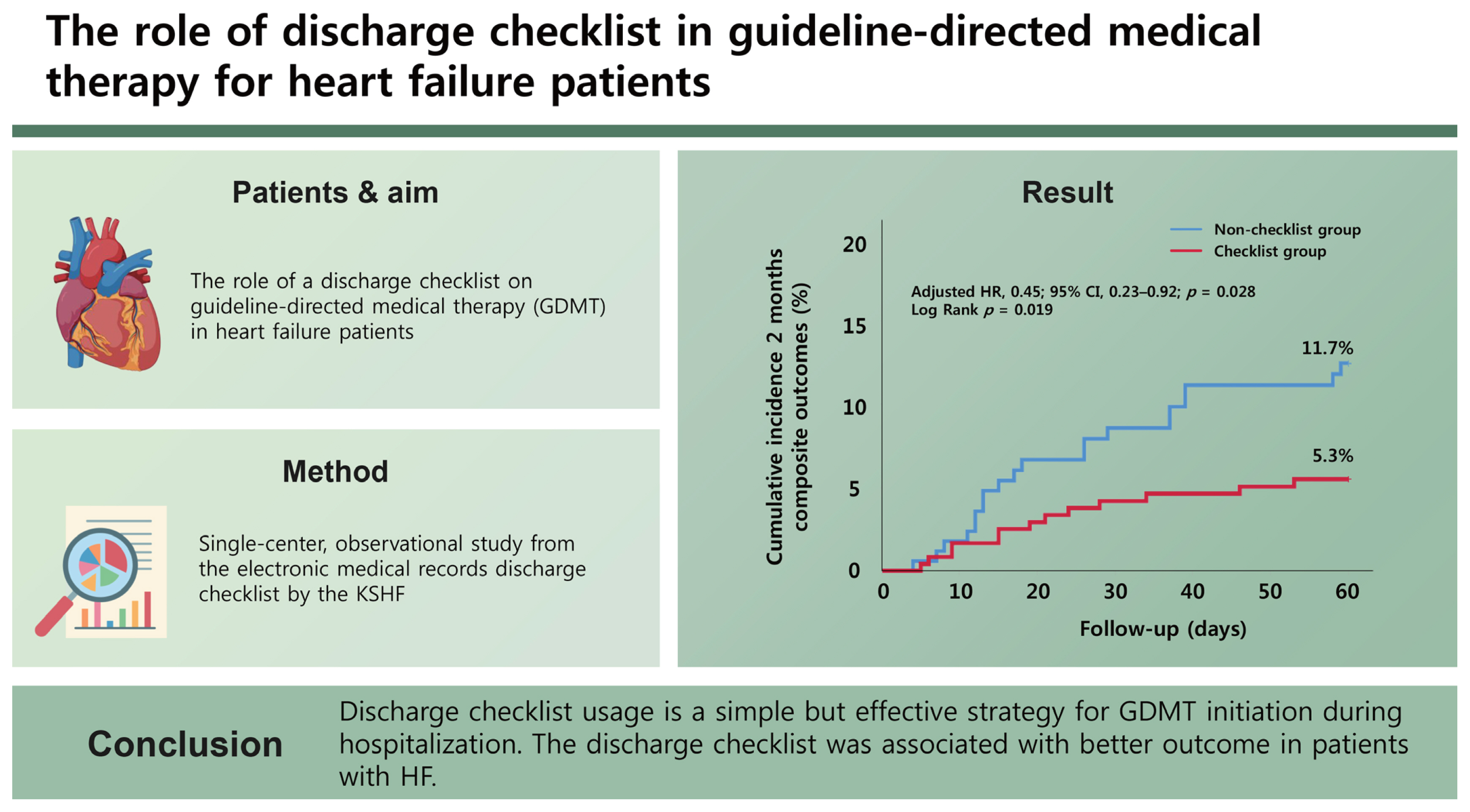6. Writing Committee; Maddox TM, et al.; Januzzi JL Jr. 2021 update to the 2017 ACC expert consensus decision pathway for optimization of heart failure treatment: answers to 10 pivotal issues about heart failure with reduced ejection fraction: a report of the American College of Cardiology Solution Set Oversight Committee. J Am Coll Cardiol 2021;77:772ŌĆō810.

8. Heidenreich PA, Bozkurt B, Aguilar D, et al. 2022 AHA/ACC/ HFSA guideline for the management of heart failure: a report of the American College of Cardiology/American Heart Association Joint Committee on clinical practice guidelines. Circulation 2022;145:e895ŌĆōe1032.

11. Maggioni AP, Dahlstr├Čm U, Filippatos G, et al. EURObservational research programme: regional differences and 1-year follow-up results of the Heart Failure Pilot Survey (ESC-HF Pilot). Eur J Heart Fail 2013;15:808ŌĆō817.


13. Basoor A, Doshi NC, Cotant JF, et al. Decreased readmissions and improved quality of care with the use of an inexpensive checklist in heart failure. Congest Heart Fail 2013;19:200ŌĆō206.


15. DeFilippis EM, Fiuzat M. Putting the ŌĆ£OptimalŌĆØ in optimal medical therapy. JACC Heart Fail 2021;9:39ŌĆō41.


16. Fonarow GC, Heywood JT, Heidenreich PA, et al. Temporal trends in clinical characteristics, treatments, and outcomes for heart failure hospitalizations, 2002 to 2004: findings from Acute Decompensated Heart Failure National Registry (ADHERE). Am Heart J 2007;153:1021ŌĆō1028.


17. Atherton JJ, Hayward CS, Wan Ahmad WA, et al. Patient characteristics from a regional multicenter database of acute decompensated heart failure in Asia Pacific (ADHERE International-Asia Pacific). J Card Fail 2012;18:82ŌĆō88.


19. Smaha LA, American Heart Association. The American Heart Association get with the guidelines program. Am Heart J 2004;148:S46ŌĆōS48.


20. Bergethon KE, Ju C, DeVore AD, et al. Trends in 30-day read-mission rates for patients hospitalized with heart failure: findings from the get with the guidelines-Heart Failure Registry. Circ Heart Fail 2016;9:10.
21. Lee SE, Cho HJ, Lee HY, et al. A multicentre cohort study of acute heart failure syndromes in Korea: rationale, design, and interim observations of the Korean Acute Heart Failure (KorAHF) registry. Eur J Heart Fail 2014;16:700ŌĆō708.


22. Hwang B, Huh I, Jeong Y, Cho HJ, Lee HY. Effects of educational intervention on mortality and patient-reported outcomes in individuals with heart failure: a randomized controlled trial. Patient Educ Couns 2022;105:2740ŌĆō2746.


25. Legallois D, Chaufourier L, Blanchart K, et al. Improving quality of care in patients with decompensated acute heart failure using a discharge checklist. Arch Cardiovasc Dis 2019;112:494ŌĆō501.












 PDF Links
PDF Links PubReader
PubReader ePub Link
ePub Link Full text via DOI
Full text via DOI Download Citation
Download Citation Supplement figure 1
Supplement figure 1 Print
Print



